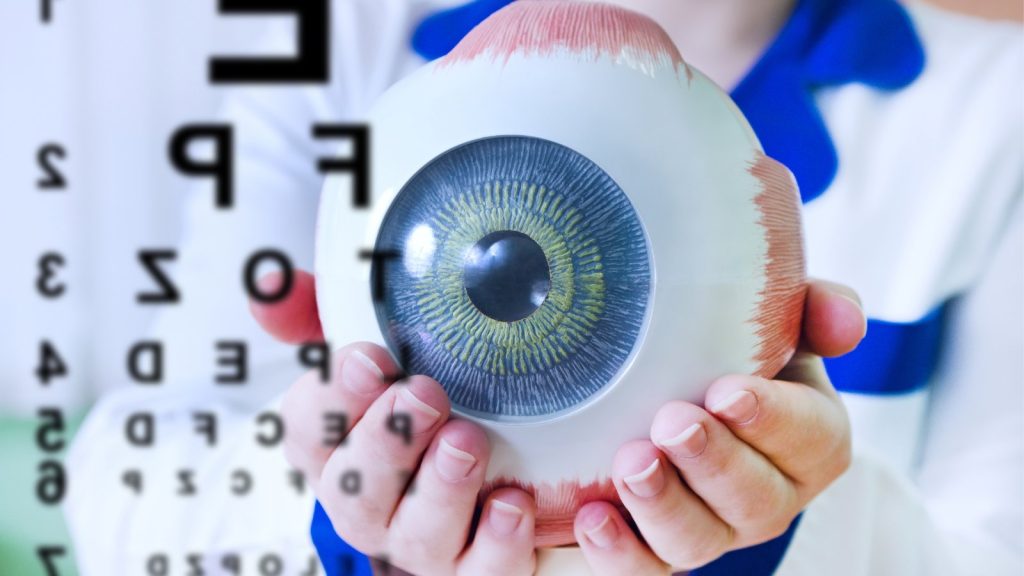Understanding the Various Eye Issues Treated by Specialized Eye Treatment Professionals
In the realm of eye treatment, specialized specialists play an important duty in diagnosing and treating a vast array of eye conditions. As we begin on this expedition of the various eye conditions attended to by specialized eye treatment specialists, it becomes noticeable that the intricate web of ocular health and wellness holds a myriad of remarkable insights waiting to be uncovered.
Common Refractive Errors
Refractive mistakes prevail aesthetic problems caused by a flaw in the eye's capacity to appropriately concentrate light, resulting in obscured vision. The most common kinds of refractive mistakes consist of myopia (nearsightedness), hyperopia (farsightedness), astigmatism, and presbyopia. Myopia happens when the eyeball is as well long or the cornea is as well rounded, triggering distant things to show up blurred. Hyperopia, on the various other hand, occurs when the eyeball is as well short or the cornea is too flat, resulting in neighboring objects running out focus. Astigmatism is identified by an irregularly designed cornea, causing altered or blurred vision in all ranges. Presbyopia is an age-related problem where the lens sheds its versatility, making it challenging to concentrate on close objects.
These refractive errors can be corrected with numerous approaches, consisting of eyeglasses, call lenses, or refractive surgical treatment. Eye treatment experts play a vital role in detecting and managing refractive mistakes to help individuals attain clearer vision and enhance their lifestyle.
Age-Related Eye Problems
One of the most prevalent age-related eye problems is age-related macular deterioration (AMD), a condition that causes central vision loss and can make activities like reading and driving challenging. Cataracts, another usual problem amongst older people, trigger clouding of the eye's natural lens, leading to obscured vision. Routine eye examinations with specialized eye care professionals are essential for early discovery and monitoring of these age-related eye problems to protect vision and preserve ocular health as individuals expand older.
Vision-Threatening Conditions
Vision-threatening illness include a variety of serious eye problems that have the potential to considerably affect an individual's sight and total visual function. These conditions present a danger of page permanent vision loss otherwise quickly detected and dealt with by specialized eye care specialists. Some typical vision-threatening diseases consist of glaucoma, diabetic person retinopathy, age-related macular degeneration (AMD), and retinal detachment.
Glaucoma is a group of eye conditions that harm the optic nerve, typically due to high intraocular stress, leading to outer vision loss and potential loss of sight if left neglected. AMD is a dynamic problem influencing the macula, leading to main vision loss.
Early detection, normal eye tests, and prompt treatment are important in handling vision-threatening diseases to preserve eyesight and keep lifestyle. Specialized eye care experts play a vital function in diagnosing, treating, and managing these conditions to stop irreparable vision loss.

Corneal Conditions
Corneal disorders include a spectrum this contact form of conditions that affect the clear front part of the eye, recognized as the cornea. Treatment for corneal conditions varies depending on the particular condition but may consist of medications, get in touch with lenses, or in severe instances, corneal transplants. Routine eye exams are crucial for very early discovery and management of corneal conditions to protect vision and eye health.
Neurological Eye Problems
Neurological eye problems involve disorders that impact the link between the eyes and the brain, influencing aesthetic handling and total eye feature. These conditions can materialize in various methods, impacting vision, eye movements, and also the control in between the eyes. One common neurological eye condition is optic neuritis, identified by swelling of the optic nerve leading to vision loss, color desaturation, and pain with eye motion.
An additional significant condition is nystagmus, where the eyes make repetitive, uncontrolled activities, influencing useful source aesthetic acuity and depth assumption. Furthermore, conditions like amblyopia, often referred to as "careless eye," result from irregular visual development in early youth, bring about lowered vision in one eye.
Neurological eye problems need customized care from specialists like neuro-ophthalmologists that have know-how in both neurology and ophthalmology. Medical diagnosis typically entails a thorough eye exam, imaging researches, and partnership with specialists to resolve the underlying neurological issues influencing the visual system. Treatment approaches can include drug, vision treatment, or in serious instances, medical interventions to handle these intricate conditions properly.

Final Thought
In conclusion, specialized eye treatment experts treat a broad variety of eye conditions, including common refractive errors, age-related eye problems, vision-threatening diseases, corneal disorders, and neurological eye conditions - refractive surgeries in al. By recognizing these numerous problems and looking for appropriate treatment from eye care professionals, people can preserve optimum eye health and vision. It is necessary to prioritize routine eye examinations and comply with advised therapy strategies to preserve and safeguard one's vision for the future